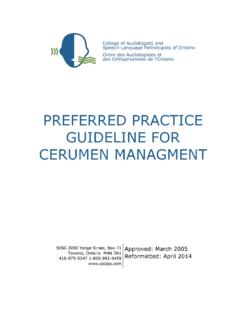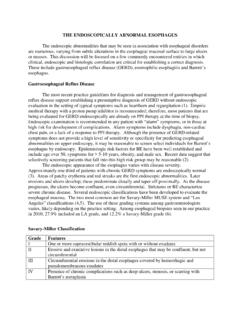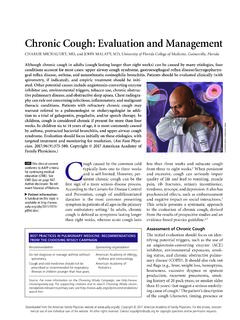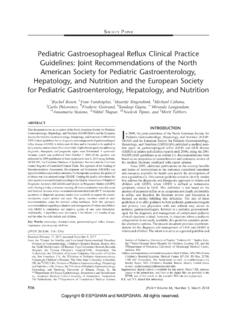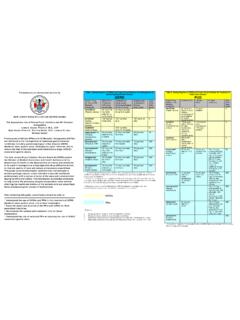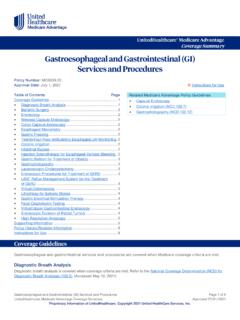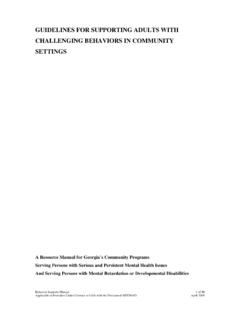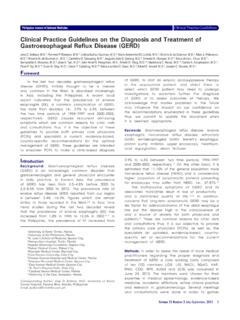Transcription of PRACTICE STANDARDS AND GUIDELINES FOR DYSPHAGIA ...
1 PRACTICE STANDARDS AND GUIDELINES FOR DYSPHAGIA INTERVENTION BY SPEECH-LANGUAGE PATHOLOGISTS 5060-3080 Yonge Street, Box 71 Toronto, Ontario M4N 3N1 416-975-5347 1-800-993-9459 Approved: September 2007 Reformatted: April 2014 September 2007 CASLPO OAOO CONTENTS TABLE OF CONTENTS Contents A) PREAMBLE .. 3 B) DEFINITION OF SERVICE .. 4 C) SCOPE OF PRACTICE .. 8 D) TARGET PATIENT/CLIENT POPULATION .. 9 E) RESOURCE REQUIREMENTS .. 10 F) COLLABORATION REQUIREMENTS .. 11 G) HEALTH AND SAFETY PRECAUTIONS .. 13 H) COMPETENCIES .. 14 I) COMPONENTS OF SERVICE DELIVERY .. 16 1. INFORMED CONSENT .. 16 2. DETERMINATION OF NEED .. 16 3. RISK management DETERMINATION .. 16 a. RISK OF ASPIRATION AND AIRWAY OBSTRUCTION.
2 16 b. RISKS ASSOCIATED WITH INGESTION OF LIQUID OR FOOD STIMULI .. 18 c. RISKS ASSOCIATED WITH RADIATION EXPOSURE .. 19 d. RISKS ASSOCIATED WITH DYSPHAGIA management .. 20 e. RISKS ASSOCIATED WITH NON-ORAL NUTRITION .. 22 4. PROCEDURES .. 22 a. 23 b. ASSESSMENT OF SWALLOWING .. 24 c. management .. 32 d. CONTINUUM OF CARE: .. 36 5. INITIATING THE INVOLVEMENT OF OTHERS .. 37 6. DISCHARGE 38 J) DOCUMENTATION .. 39 K) GLOSSARY .. 41 L) REFERENCES .. 43 DATE CASLPO OAOO PAGE 2 EXECUTIVE SUMMARY 1. Providing service for swallowing disorders ( DYSPHAGIA ) is within the speech-language pathologist s (SLP) scope. 2. The SLP assesses swallowing function as well as develops, implements and monitors DYSPHAGIA management programs in collaboration with the patient/client and other members of the health care team.
3 3. SLPs must follow infection control protocols appropriate for circumstances. 4. SLPs must have the required competencies to provide services for swallowing disorders. 5. In the course of providing service for swallowing disorders the SLP must; a. Obtain and document informed consent from the patient/client for each component of service for swallowing disorders. b. Determine the patient s/client s needs. c. Determine the nature of the risks associated with any service provided and take steps to minimize those risks. The types of risks to be considered include: i. Risks of aspiration and blocked airway ii. Risks associated with swallowing liquid or food iii. Risks associated with radiation exposure iv. Risks which may arise when managing the swallowing disorder.
4 These risks may arise when: 1. Changing the texture of the food or liquid to be swallowed 2. Changing posture while swallowing 3. Controlling breathing patterns when swallowing 4. Using electrical stimulation therapy techniques v. Risks associated with nourishment by tube or other non-oral methods in cases of significant swallowing impairment. d. Follow the necessary mandatory procedures: i. Determine if the patient/client is ready for assessment. ii. Assess swallowing using clinical, non-instrumental techniques. iii. Provide treatment or recommendations to decrease the swallowing disorder and or its impact on the patient/client. The techniques used may: 1. Assist the patient/client in compensating for the swallow disorder 2.
5 Result in permanent changes by improving function in the muscles used for swallowing. iv. Provide education and counselling to assist the patient/client in understanding the swallowing disorder and how to minimize its impact. v. Ensure that the results of all techniques are evaluated to ensure that swallowing is not made worse by the methods used. e. Consider which optional procedures should be utilized such as: i. Screening for swallowing disorders ii. Use of instrumentation for assessment f. Initiate the involvement of others when appropriate. g. Discharge the patient/client. 6. All components of swallowing disorder service delivery must be documented. DATE CASLPO OAOO PAGE 3 A) PREAMBLE PRACTICE STANDARDS and GUIDELINES (PSGs) are necessary to ensure quality care by speech-language pathologists (SLPs) to the people of Ontario who require services for DYSPHAGIA (swallowing disorders).
6 The skills and competencies outlined in this PSG are an important component in the provision of quality care for swallowing disorders. It is the intent of this PSG to provide SLPs in Ontario with an overview of the swallowing assessment and management process and to provide some of the knowledge necessary to make responsible decisions regarding DYSPHAGIA service delivery. This PSG is meant to be used as a decision-making framework. It is not intended to be a tutorial or to provide SLPs with all the information required to PRACTICE in the area of DYSPHAGIA . SLPs are ethically responsible to ensure competence in the assessment and management of DYSPHAGIA and to ensure that their patients/clients are safe during the performance of these services.
7 Specialized competencies are required for specific populations (such as infants, children, tracheotomized and medically fragile patients/clients). It is essential that SLPs working with these populations (in which the risk of harm may be amplified) have the necessary expertise, resources and equipment to competently provide DYSPHAGIA services. This PSG incorporates both must and should statements. Must statements establish STANDARDS that members must always follow. In some cases, must statements have been established in legislation and/or CASLPO documents. In other cases, the must statements describe STANDARDS that are established for the first time in this PSG. Should statements incorporated into this PSG describe best practices.
8 To the greatest extent possible, members should follow these best PRACTICE GUIDELINES . The inclusion of a particular recommendation in these STANDARDS and GUIDELINES does not necessarily indicate that the PRACTICE is supported by high level research evidence ( , evidence from randomized clinical trials), but rather that the guideline is grounded in current best evidence derived from a broad review of the research literature (ranging from single case reports to larger trials) and/or expert opinion. SLPs should exercise professional judgment, taking into account the environment(s) and the individual patient s/client s needs when considering deviating from these GUIDELINES . SLPs must document and be prepared to fully explain departures from this PSG.
9 CASLPO s original Preferred PRACTICE Guideline for DYSPHAGIA was developed in 2000. The current document represents a revision of the original GUIDELINES document, with a change in emphasis to STANDARDS and GUIDELINES for speech-language pathologists working in the area of DYSPHAGIA . DATE CASLPO OAOO PAGE 4 B) DEFINITION OF SERVICE Swallowing is a behaviour that healthy individuals carry out effortlessly more than 1000 times per day[1]. Swallowing is essential for nourishment and hydration, yet also affords us pleasure and is central to social events in our daily lives. DYSPHAGIA is the term used to refer to an impairment or disorder of the process of deglutition (swallowing) affecting the oral, pharyngeal and/or esophageal phases of swallowing.
10 DYSPHAGIA in itself is not a disease but rather a secondary consequence of one or more underlying pathologies[2], including those of neurogenic, oncologic, structural, psychogenic, surgical, congenital or iatrogenic origin. DYSPHAGIA places individuals at risk for negative nutritional and respiratory sequelae ( pneumonia) [3, 4]. The economic consequences of DYSPHAGIA for the health-care system are considerable; the cost of treating pneumonia in Canada has been estimated at $1,000 per day of hospitalization[5]. Besides being a physiological impairment, DYSPHAGIA can have significant negative consequences for quality of life and overall well-being[6-10]. In the United States, it has been estimated that oropharyngeal DYSPHAGIA occurs in approximately 10 per cent of all acute hospital inpatients/clients [11], 30 per cent of patients/clients in rehabilitation centres, and half of patients/clients in nursing home facilities [12].
